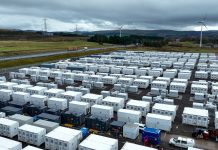
The government’s demand reduction pilot auction has not delivered value for money because the department of energy and climate change (Decc) excluded projects incentivised by other means.
That was the view of the Association of Decentralised Energy (ADE), formerly known as the CHP Association.
The winners of the inaugural pilot announcement were announced last week, with companies such as Anesco, BAE, Dixons and Tata winning funding, alongside leisure groups and local authorities.
But ADE director Tim Rotheray told Energyst Media that the result of the auction, which paid an average price of £229/kW, made demand side measures appear expensive in comparison to supply side. For example, the T-4 capacity market auction achieved a price of £19.40/kW.
The problem, he said, was that Decc excluded projects with Climate Change Agreements (CCAs) from bidding into the demand reduction pilot on the basis of additionality. That is, because firms with CCAs already have one incentive (a discount on the Climate Change Levy), they therefore cannot claim another.
“So [Decc] ended up… automatically excluding a whole load of good value opportunity… and paying more than £200 per kilowatt, which doesn’t sound like best value for the consumer,” said Rotheray. “That is the problem with additionality and we have to find a way around it. Otherwise you are making the cost of decarbonisation higher.”
More broadly, Rotheray added that the reason demand side response (DSR) currently made up such a small proportion (0.35%) of the capacity market was “because it was designed for generators”, yet the additionality rule had not truly been applied.
“Additionality says ‘I will only give you the money if you would not have done it otherwise’. Well, think of all the coal and gas plant awarded contracts in the capacity market, how many of them would have shut down if the capacity market hadn’t existed? Probably very few, if any.”
While Decc is working out how to incorporate more DSR into the capacity market, to realise the potential of the demand side, the market itself must be designed more flexibly, Rotheray suggested.
He said the departmental interpretation of a capacity market “appears to be ‘how do we keep power stations operating and how do we get power stations built?’” What it should be, he said, is “‘how do we keep the lights on at lowest cost?’”
One of the key design problems stopping businesses taking part in capacity auctions from a DSR perspective, he said, was the idea that stress events may last indefinitely, and that the level of system stress will not fluctuate, “which of course is wrong, because demand rises and falls throughout the day.”
“[So the design of the capacity market] ignores that and assumes ‘stress is stress’. It also assumes that you can just keep buying fuel and keep running. That is power station thinking.”
That means industrial plant, for example, which could provide “really valuable” demand response for a four hour peak, but not commit to a 24 hour response period, is “not of value [to Decc], and that is the problem.”
“So why did DSR not participate [more fully in the capacity market auction]? Because it was designed for power stations. Whether [Decc will address that in mooted post-election design improvements] only time will tell.”
Read a full interview with Tim Rotheray in the forthcoming print issue of Water, Energy & Environment.
Related articles:
Decc tenders contract to scope DSR potential in future capacity auctions
Decc to pay firms for implementing energy efficiency projects
UK firms with CHP plant could be paid to stop exporting power
CFD appeals may cost ineligible generators, Decc warns
UK businesses pan electricity market reforms, prepare for 10% power price hikes in 2015
Another fine mess: Energy policy’s perverse outcomes mean ‘new Energy Act by 2017′
Click here to see if you qualify for a free subscription to the print magazine, or to renew.
Follow us at @EnergystMedia. For regular bulletins, sign up for the free newsletter.



